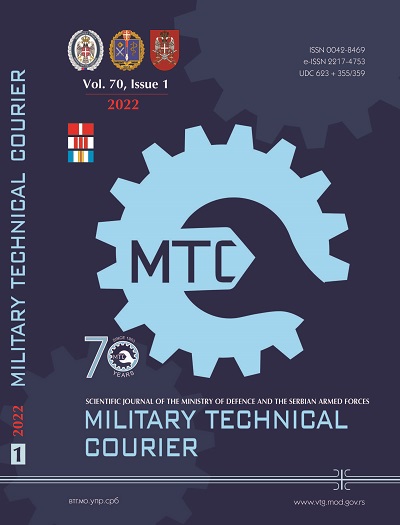Beta functions in the Quantum Field Theory
Abstract
Introduction/purpose: The running of the coupling constant in various Quantum Field Theories and a possible behaviour of the beta function are illustrated.
Methods: The Callan–Symanzik equation is used for the study of the beta function evolution.
Results: Different behaviours of the coupling constant for high energies are observed for different theories. The phenomenon of asymptotic freedom is of particular interest.
Conclusions: Quantum Electrodynamics (QED) and Quantum Chromodinamics (QCD) coupling constants have completely different behaviours in the regime of high energies. While the first one diverges for finite energies, the latter one tends to zero as energy increases. This QCD phenomenon is called asymptotic freedom.
References
Callan, C.G. 1970. Broken Scale Invariance in Scalar Field Theory. Physical Review D, 2(8), pp.1541-1547. Available at: https://doi.org/10.1103/PhysRevD.2.1541
Coleman, S. & Weinberg, E. 1973. Radiative Corrections as the Origin of Spontaneous Symmetry Breaking. Physical Review D, 7(6), pp.1888-1910. Available at: https://doi.org/10.1103/PhysRevD.7.1888
Fabiano, N. 2021. Quantum electrodynamics divergencies. Vojnotehnički glasnik/Military Technical Courier, 69(3), pp.656-675. Available at: https://doi.org/10.5937/vojtehg69-30366
Glashow, S. 1959. The renormalizability of vector meson interactions. Nuclear Physics, 10(February–May), pp.107-117. Available at: https://doi.org/10.1016/0029-5582(59)90196-8
Gross, D.J. & Wilczek F. 1973. Asymptotically Free Gauge Theories. I. Physical Review D, 8(10), pp.3633-3652. Available at: https://doi.org/10.1103/PhysRevD.8.3633
Landau, L.D., Abrikosov, A.A. & Khalatnikov, I.M. 1954. Dokl. Akad. Nauk SSSR, 95, 497, 773, 1177 (in Russian).
Landau, L.D. & Pomeranchuk, I.Ya. 1955. Dokl. Akad. Nauk SSSR, 102, 489 (in Russian).
Politzer, H.D. 1973. Reliable Perturbative Results for Strong Interactions? Physical Review Letters, 30(26) pp.1346-1349. Available at: https://doi.org/10.1103/PhysRevLett.30.1346
Salam, A. & Ward, J.C. 1959. Weak and electromagnetic interactions. Il Nuovo Cimento, 11(4), pp.568-577. Available at: https://doi.org/10.1007/BF02726525
Symanzik, K. 1970. Small distance behaviour in field theory and power counting. Communications in Mathematical Physics, 18(3), pp.227-246. Available at: https://doi.org/10.1007/bf01649434
Symanzik, K. 1971. Small-distance-behaviour analysis and Wilson expansions. Communications in Mathematical Physics, 23(1), pp.49-86. Available at: https://doi.org/10.1007/BF01877596
Weinberg, S. 1967. A Model of Leptons. Physical Review Letters, 19(21), pp.1264-1266. Available at: https://doi.org/10.1103/PhysRevLett.19.1264
Weinberg, S. 1973. New Approach to the Renormalization Group. Physical Review D, 8(10), pp.3497-3509. Available at: https://doi.org/10.1103/PhysRevD.8.3497
Yang, C.N. & Mills, R. 1954. Conservation of Isotopic Spin and Isotopic Gauge Invariance. Physical Review, 96(1), pp.191-195. Available at: https://doi.org/10.1103/PhysRev.96.191
Yukawa, H. 1935. On the interaction of elementary particles. Proceedings of the Physico-Mathematical Society of Japan. 3rd Series, 17, pp.48-75. Available at: https://doi.org/10.11429/ppmsj1919.17.0_48
Proposed Creative Commons Copyright Notices
Proposed Policy for Military Technical Courier (Journals That Offer Open Access)
Authors who publish with this journal agree to the following terms:
Authors retain copyright and grant the journal right of first publication with the work simultaneously licensed under a Creative Commons Attribution License that allows others to share the work with an acknowledgement of the work's authorship and initial publication in this journal.
- Authors are able to enter into separate, additional contractual arrangements for the non-exclusive distribution of the journal's published version of the work (e.g., post it to an institutional repository or publish it in a book), with an acknowledgement of its initial publication in this journal.
- Authors are permitted and encouraged to post their work online (e.g., in institutional repositories or on their website) prior to and during the submission process, as it can lead to productive exchanges, as well as earlier and greater citation of published work (See The Effect of Open Access).

